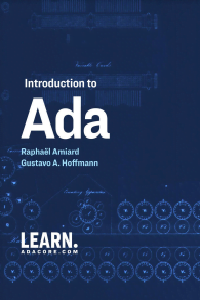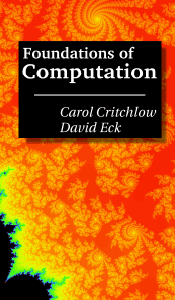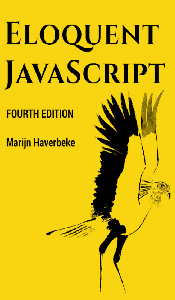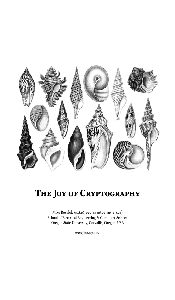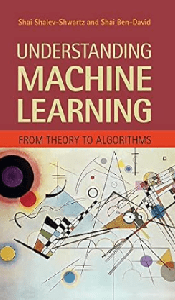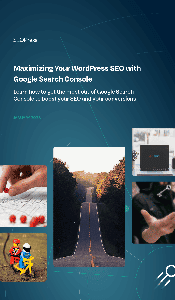This comprehensive beginner’s guide introduces the Ada programming language. It provides an overview of Ada’s history and design philosophy emphasizing safety, reliability and maintainability. The tutorial explains core syntax and programming constructs through numerous code examples. It also covers advanced features like packages, generics, exceptions and concurrency. Later sections address technically demanding but useful topics such as standard containers, numerics and strings.
Recommended for: Beginner-to-intermediate readers interested in learning the Ada programming language.
You will:
- Gain a solid understanding of the history, philosophy, and key features that make Ada a unique and powerful programming language
- Learn the fundamentals of imperative programming in Ada, including control structures like if/then/else, loops, and the case statement
- Explore Ada’s modular programming capabilities, including packages, visibility, and information hiding
- Dive deep into subprograms, understanding parameter modes, function calls, and advanced concepts like nested subprograms
- Understand how to work with Ada’s strong type system, including integers, floating-point types, enumerations, records, and arrays
- Learn about exception handling, tasking, and protected objects – key Ada features for building robust, concurrent systems
- Explore advanced Ada features like generics, access types, and interfacing with C
- Apply your Ada knowledge through hands-on coding exercises and examples throughout the course
Detailed Overview
The document delves into fundamental Ada concepts like variables, scoping, data types, expressions and control structures. It carefully explains the language basics. Chapters introduce object-oriented principles adapted to Ada like inheritance with derived/tagged types and polymorphism with dispatching operations. Advanced features explored include packages for modularity, generics for abstraction/reuse, exceptions for error handling and tasking support for concurrency. Later sections provide in-depth coverage of standard containers/collections and processing capabilities for numerics/strings. It even addresses Ada interfacing with other languages. Designed for beginners, each concept builds logically through clear explanations and code snippets. Programmers can use this guide as a stand-alone reference to gain a solid grounding in Ada syntax, design techniques and advanced functionality.
To reinforce the concepts covered in the textbook, a companion book of exercises is available. Titled “Introduction to Ada: Laboratories”, it spans numerous chapters containing over 150 hands-on labs that allow readers to apply their knowledge through practical Ada programming problems. This workbook provides exercises to help learners cement their skills in the Ada language.
Citation
Raphaël Amiard and Gustavo A. Hoffmann. Introduction to Ada. AdaCore, 2024. https://learn.adacore.com/courses/intro-to-ada/index.html.
Licensing
This work is licensed under a Creative Commons Attribution 4.0 International (CC BY 4.0) license. The full text of the license is available at https://creativecommons.org/licenses/by/4.0/.

